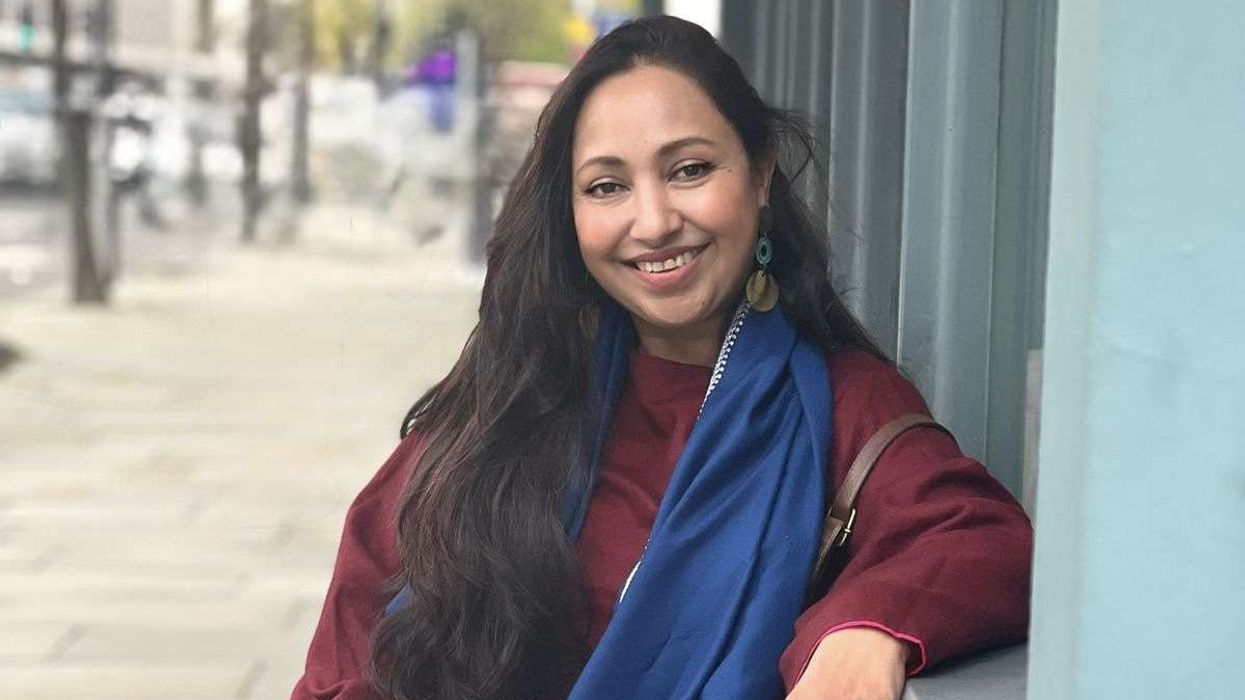by ASJAD NAZIR
SHORT films are one of the paths for future filmmakers and one of those to introduce himself through that medium this year has been writer-director Raj Krishna.
His debut short film Padmavyuha has been screened at major festivals and the story’s uniqueness was such that he managed to persuade Bollywood beauty Pooja Batra to play a role in it.
Eastern Eye caught up with Raj Krishna to discuss his film, rooted in Hinduism, mythology and the unknown.
What is it that inspired your film Padmavyuha?
I wanted to make a dark thriller rooted in Indian mythology. My goal was to explore the beauty of Hinduism and power of faith, while also creating a gripping adventure I could make on a budget, as an experiment for my first directing project.
Tell us more about the film Padmavyuha?
Padmavyuha is a story of a university professor who has lost his faith; late one night he receives a phone call that draws him into a labyrinth of mystic puzzles, the unexpected answer to which will reveal a conspiracy and shake his own beliefs.
Is there a key message you tried to convey?
There are many – and I’d love for the viewer to be able to take away what they want from it as well. Some examples of what we are exploring is Western colonisation of the Eastern world and how ancient texts were rewritten for their own benefit. Or, the advanced nature of some scientific ideas that were proposed in some ancient Indian texts! These fairly complex ideas haven’t been explored in the form of a contemporary thriller, at least not in one that I could find.
Who are you hoping connects with the film?
Anyone who likes thrillers or wants to learn more about Indian history.
What has the response been like for the film and are you hoping it provokes a debate?
Anyone who seems to appreciate films has written about it very positively, including from some prolific film critics. But on the flip side, it has generated a bit of a right -wing conspiracy theorist backlash. They have come out and are generating misinformation campaigns saying that we are speaking negatively of Hinduism. In fact, it is the opposite –people who see the film realise that we are only speaking positively about Hinduism.
What can we expect next from you?
I’m working on a few things, including a big Hindi-language action film. It is the film that I’ve always wanted to make and the reason I got into directing in the first place.
Who is your film hero?
There are so many, including David Fincher, Satyajit Ray and Robert Rodriguez. Rodriguez in particular had a fascinating journey – if you read his book Rebel Without A Crew, you’ll see the extreme lengths to which he went (subjecting himself to medical experiments) to get the money he needed for his first film, and even then, it was just a few thousand dollars. What he was able to accomplish with his sheer tenacity and creativity is phenomenal.
What are your all-time favourite movies?
It might be a toss up between Christopher Nolan’s Memento – a lot of elements of which you’ll find in Padmavyuha, like the ambiguous protagonist and chronological puzzle. Also Rituparno Ghosh’s Hindi film Raincoat, which is probably the most haunting love story I’ve ever seen.
What is it that inspires you as a filmmaker?
The good and the bad in the world, both inspire me. The immense beauty and tremendous darkness. Art can bring these things to light, force us to think through the issues and hopefully, become better people.
Why do you love cinema so much?
It is an art form that has been sent down by the gods. It’s the most specific form of art that I believe exists. The ability to use this technique for good is why I love cinema.












